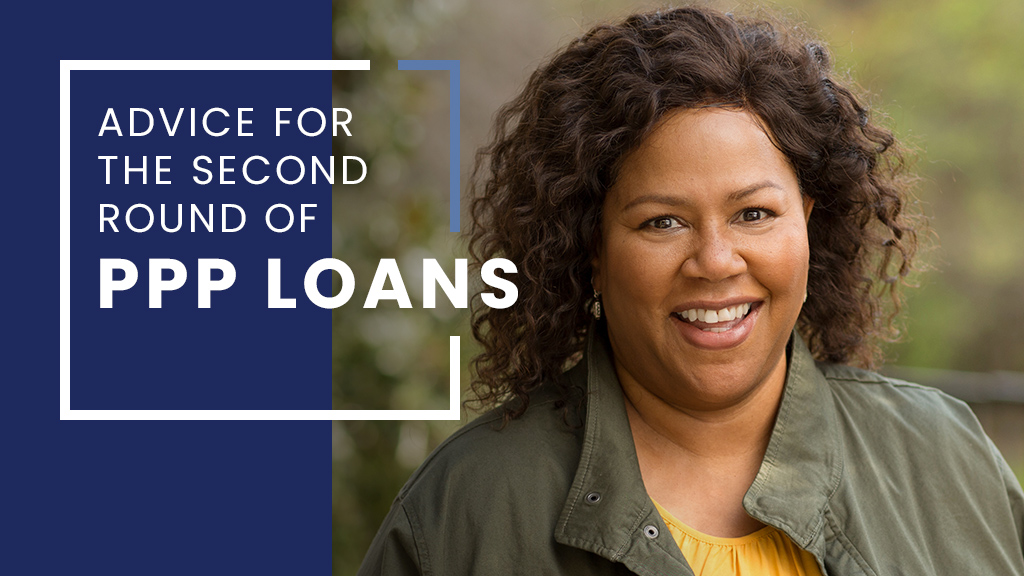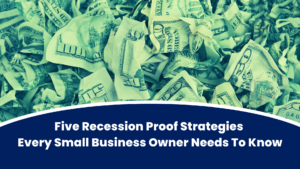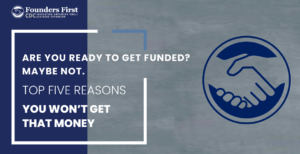By Kim Folsom
The SBA reopened the Paycheck Protection Program (PPP) for second draws in January 2021. That means if you already received a PPP loan last year, you can apply for a second round. (If you didn’t receive a loan in the first round, you can also apply for your first loan). The SBA is accepting PPP loan applications via participating lenders from January 13, 2021 until March 31, 2021.
For most borrowers, the maximum loan amount for a second draw PPP is 2.5 times the average monthly 2019 or 2020 payroll costs up to $2 million. The loans can help fund payroll costs, including benefits, as well as mortgage interest, rent, utilities, worker protection costs related to COVID-19, and certain other costs.
You’re eligible for a second draw PPP loan if you fulfill the following requirements:
- You previously received a first draw PPP loan and will or have used the full amount only for authorized uses
- Your business has no more than 300 employees
- You can demonstrate at least a 25% reduction in gross receipts between comparable quarters in 2019 and 2020
The SBA is also setting aside at least $25 billion for second draw PPP loans to eligible borrowers with a maximum of 10 employees or for loans of $250,000 or less to eligible borrowers in low or moderate income neighborhoods. This is critical. Forty percent of the businesses we work with at Founders First Capital got PPP loans in the first round last year, but not everyone was as fortunate. Diverse founders were often left behind, only receiving 2% of the loans.
The top reasons small businesses were locked out of PPP funding in the first round — and these are lessons for the second round — are as follows:
- No or incomplete financial documentation
- No relationships with qualified, participating lenders
- Funds ran out, so many businesses were too late
- Failure to monitor and track business financials until funds were received
These problems line up with what a panel of experts said during a Founders First Webinar in January.
Michelle Brown, Executive Board Member of Quality Interactions, said her company received PPP funding in the first round, but it was difficult. They were not successful with the large national banks, but they were successful with a local community bank, further emphasizing the need to build a relationship with a local bank if you don’t have one already.
“Make sure you have your financial house in order,” Brown emphasized. “You need an accountant to document payroll, taxes, benefits, etc.”
That’s good advice. Don’t do it alone. Applying for the loans, ensuring you’re eligible, and using the money properly to make sure the loan is eligible for forgiveness is crucial. There’s help out there, so don’t hesitate to go get it.
Another member of our panel, Chris Horton, is a National Certified Business Advisor at Lendistry, whose mission is to provide economic opportunities and progressive growth for small business owners and their underserved communities. It’s a resource for both financial education and financing
Lendistry is an approved lender for PPP loans and has funded more than 17,000 total loans and grants to small businesses and entrepreneurs, deploying over $456 million.
“We’re here to help you access capital, to survive, and get through the pandemic,” Horton said. “We also provide technical assistance to small businesses in underserved communities on how to leverage and appropriate the use of PPP funds and how to rebuild and pivot to the new environment we’ll be in as we come out of COVID-19.”
All our panelists emphasized the importance of needing your financials to be accurate to both apply for the loan and then to make sure the loan is forgiven.
Jennifer Barnes, CEO & Founder of Optima Office, an HR firm, explained how the loan amount is calculated. Divide 12 months of your payroll by 12 and take the monthly average and multiple it by 2.5%, she said. She also discussed finer details that may apply to your business. For instance, if you don’t have full-time employees but use contractors, you could still be eligible. And no matter what, you need to cap salaries at $100,000 for the PPP loan calculation. Wages include regular wages, commissions, bonuses, tips, holiday, vacation, and sick pay, and qualified benefits such as health insurance, 401(k)s, and any pension you might be contributing to.
She also said if you’re a seasonal business in which any six-month period where the revenue is 33.3% less than the other six-month period you can actually select your peak 12-week payroll period between February 15, 2019 and February 15, 2020 and divide it by 3 to get your average monthly payroll.
Mack J. Davis III, Senior Vice President of Bank OZK, which did over 9000 applications and close to $700 million in PPP funding in the first round, said, the biggest frustration bankers have is getting the information they need to complete the applications. Many applicants either could not produce the required information or by the time they did, the money had run out.
For the second round, the bank has partnered with a national accounting and finance firm to help their clients comply with the process to ensure the loans can be forgiven, which is key. The bank is only working with existing customer relationships for this round, so new businesses won’t be able to break in. But for those who already got funding in round one, the application process is the same — all electronic through the bank’s portal.
“Make sure to give the SBA everything they ask for,” Davis said. “If you don’t provide it, your application will stop.”
Barnes and Brown reiterated that. Don’t leave anything blank on the application form. Dot all your “I’s” and cross all your “T’s.” Don’t leave anything to chance or the whole process could come to a grinding halt.
Don’t panic, though. It’s a stressful time for everyone, especially small business owners. If you’re fastidious and get professional help where you need it, the funds are out there and you can get a loan (potentially forgivable) to help you get through these trying times.
Kim Folsom is the founder and CEO of Founders First Capital Partners, which has helped accelerate the success of hundreds of small, service-based, business-to-business companies since 2015. Visit our website to learn more.




